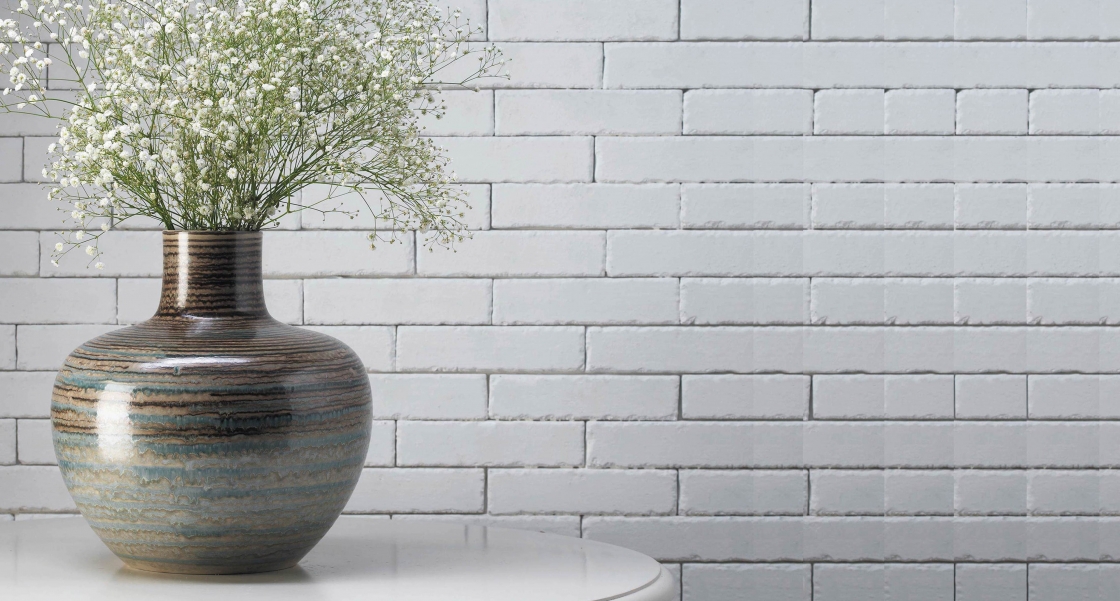
The reaction of ceramics to water is always subject to many doubts and worries. To properly answer this question, we should start from the very beginning: Arfai is specialized in the production of ornamental earthenware, which is, together with porcelain, stoneware or terracotta, one type of clay. Each one has proper specifications and characteristics and as long as earthenware is concerned, our answer is no. As a raw material, and as low-fire clay, earthenware is not waterproof. And now you ask: how come if Arfai produce vases for flowers, that need water to survive longer?
We explain. By characteristic, earthenware is a porous and plastic clay. In firing, its plasticity is lost, but not the inherent porosity. Imperceptible pores are present in the biscuit, being then responsible for the water absorption which will either cause the leakage of the liquid in contact with the piece or, over time, for undermining the ceramics body, in a type of rotting effect.
Luckily, at this stage the piece is not finished – there is still the glaze. Besides giving color and character (read what do glazes say about ceramics), by creating a vitreous layer that will cover the surface, the glaze may waterproof the piece and prevent the leak. But why may? Again, we explain:
The foot rim
During fire, the glaze will fuse with the ceramics body. To avoid that this foundry will glue the piece to the kiln, the bottom must be free of glaze, creating an unglazed area, called foot rim. This rim is neither more nor less than biscuit (unglazed earthenware), keeping its weaknesses and water absorption percentage. As such, this area should never be in contact with running water.
Regular Glazes versus Special Glazes
While regular glazes stable during fire, allowing a complete and uniform coverage of the piece, the big and beautiful family of special glazes – reactive, crackles or selenium – is not this simple.
“Special glazes create unexpected reactions during fire that will open pores in the glaze. These pores – tiny holes in the glaze – will leave the item exposed, and again, more likely to absorb liquid in contact with the piece.” – explains Tânia Gonçalves, Arfai Senior Design
The glazing method
The mix and match of glazes and glazing techniques should also be considered to define the water resistance of a piece. This is to say that having a regular glaze (read everything you should know about earthenware glazes) is not enough to consider a vase waterproof once its decoration may include a beautiful reactive glaze in the bottom – if so, we are back to the point 2.
How and when is earthenware waterproof?
When glazed with a regular simple glaze or when this type of glaze is applied to the interior of the piece – some decorations allow the use of a regular sealing glaze in the inner part, while a special one is in the exterior to decorate (note that this is not the solution, once some glazes cannot be mixed). Additionally, there is the possibility of applying a water repellent to the finished item, a special product that will seal any tiny pore in the glaze, repelling the liquid in contact with the piece – a solution widely used in flower pots, for example.
One or other are not easy to identify by a non-expert eye, so Arfai‘s advice is: always to read the instructions of use and given by the manufacture. The art of ceramics has so much of organic as of chemical, and like baking a cake, despite the knowledge and experience of the cook/ceramist, the proper ‘character’ of the clay may eventually add a touch of its own. This means that unexpected results may arise, and as long as glazing is concerned, it is not surprising that a pore will come out in a regular simple glaze.
Pro-Tip: Using fresh flowers in a non-waterproof vase
Being created for decorative use, some glazes and decorations will never waterproof an earthenware piece. When one would like to use an earthenware piece as a flower pot, our suggestion is: if the piece’s shape allows, put a glass/plastic recipient inside the ceramics body. This way you can water the flowers without risking that the liquid will leak and damage the vase or even the furniture.
(Know more do’s and dont’s of ceramics’ cleansing)

